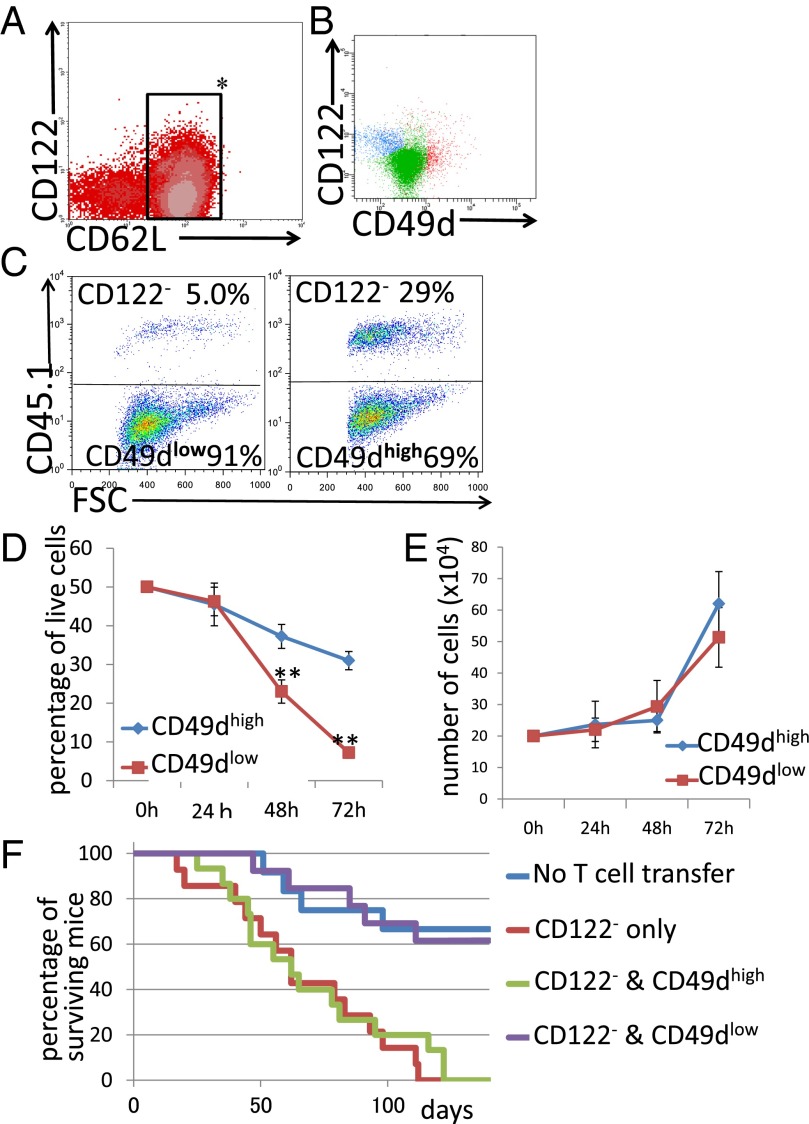Fig. 1.
(A) Spleen cells were analyzed for the expression of CD8, CD122, CD62L, and CD49d. (B) CD62L+ cells (inside of the rectangle in A) were analyzed for the expression of CD122 and CD49d. (C and D) Analysis of regulatory activity in coculture. (C, Left) CD8+CD122−CD45.1+ cells and (CD8+CD122+)CD49dlowCD45.1− cells. (C, Right) CD8+CD122−CD45.1+ cells and (CD8+CD122+)CD49dhighCD45.1− cells. Representative results obtained after 72 h of coculture are shown. (D) The percentages of CD8+CD122− on total live cells obtained from three independent experiments are shown. **Significantly different at the same time point (P < 0.01, Student’s t test). (E) Cell growth analysis of CD49dlow and CD49dhigh T cells. For all time points, the values obtained for CD49dlow (red line) and CD49dhigh T cells (blue line) did not significantly differ (P > 0.05, Student’s t test). (F) Analysis of adoptive T-cell transfer to RAG-2−/− mice. Transfer of a mixture of CD49dlow and CD122− T cells (purple line) effectively prolonged survival of the mice; survival of these mice was significantly higher than that of mice receiving CD122− cells alone (red line; log-rank test, P = 0.0003; Wilcoxon test, P = 0.0014). In contrast, transfer of a mixture of CD49dhigh and CD122− T cells did not significantly affect survival (green line) compared with that of mice receiving CD122− cells alone (log-rank test, P = 0.5271; Wilcoxon test, P = 0.8964).

